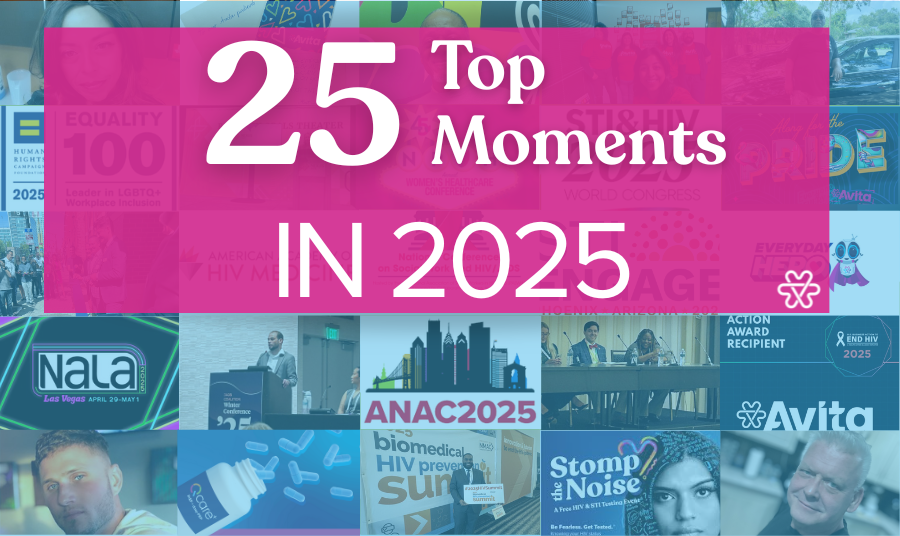It’s a tough pill to swallow: On average, the U.S. spends twice as much on healthcare per person as other countries of comparable size and wealth, yet it has worse healthcare outcomes than its peer countries.
While this topic of study is much larger than can be covered in this article, in recent decades, there has been an increased focus on the social determinants of health (SDOH), broadly defined by the World Health Organization (WHO) as “the conditions in which people are born, grow, live, work and age, and people’s access to power, money and resources,” and their impact on overall wellness. Studies estimate that SDOH are responsible for up to 55% of population health outcomes in high-income countries, whereas clinical encounters account for 20% of health outcomes.
Community health centers have long led the way in recognizing the importance of a holistic healthcare approach that considers both patients’ socio-economic factors and their clinical needs. Trusted in the community for over two decades, AvitaCare Atlanta, an Avita Care Solutions company, partners with MedCura Health to offer compassionate, comprehensive, and inclusive primary and specialized care services to the greater Atlanta community. These include in-person and telehealth-based HIV prevention and treatment programs, sexual wellness care, gender-affirming care, and diabetes management, as well as a full suite of social services, nutritional counseling, behavioral health, and more.
We interviewed Monique Jones and Nelicia Griffith, social work care managers at AvitaCare Atlanta, to discuss their roles in helping patients overcome SDOH-related obstacles to clinical care, why partnerships with other community care organizations are crucial to serving the whole patient, their research on the importance of safe and affordable housing, the long journey involved in helping a patient start over—and why it’s all worth it.
Community health centers have long led the way in recognizing the importance of a holistic healthcare approach that considers both patients’ socio-economic factors and their clinical needs.
Survival mode is not a recipe for wellness
Avita: To start, tell me a little bit about the social determinants of health—known as non-medical factors that influence an individual’s health, well-being, and quality of life—and how they can directly impact patient wellness, specifically for marginalized patients and those living with chronic disease states.
Nelicia Griffith, social work care manager, AvitaCare Atlanta: The different social determinants of health vary from employment and income to food security, housing instability, education and literacy, social support, health insurance, and transportation. Often, these factors are interconnected.
For example, when people lack job security and/or good working conditions, they often also don’t have employer-subsidized health insurance. This affects their ability to afford medications that can cost thousands of dollars per bottle, which significantly impacts their health and wellness.
A lack of safe and affordable housing is another major concern we see, and one of our most requested social service referrals. There’s not much affordable housing in Atlanta right now. If someone isn’t in a safe living condition, they’re probably less likely to take their medications, come to their appointments, and stay healthy.
Job instability and housing problems flow right into transportation issues. In the metro Atlanta area, we have the Metropolitan Atlanta Rapid Transit Authority (MARTA) for public transportation. However, outside of metro Atlanta, accessing the city to use public transportation is very difficult. When people don’t have reliable transportation, can’t afford Ubers or taxis, and struggle to manage the multiple bus and train transfers it can take to reach their healthcare providers, they often miss their appointments.
I always refer to Maslow’s Hierarchy of Needs, a well-known theory surrounding personal motivation that states that our actions are motivated by a series of physical and psychological needs ranging in complexity. That’s where it starts. If you don’t have your basic needs met, then you’re probably not worried about your health. You’re in survival mode. Health is typically the first thing to get put on the back burner.
Monique Jones, social work care manager, AvitaCare Atlanta: As social workers, it’s our job to identify barriers to care and connect patients with the community resources they need to stay healthy. The best outcomes stem from choosing a treatment plan centered around the patient’s circumstances versus offering them a plan they can’t adhere to.
If you don't have your basic needs met, then you’re probably not worried about your health. You're in survival mode. Health is typically the first thing to get put on the back burner.
Nelicia Griffith, LCSW
Social Work Care Manager, AvitaCare Atlanta
It takes a village
Avita: How do you all work to address these challenges for your patient base at AvitaCare Atlanta? Please walk me through the services you offer patients and how you collaborate internally with providers and specialists to foster a holistic care program.
Monique Jones: Normally, we first receive a phone call from the patient’s provider after the patient expresses to the provider why they haven’t been making it to appointments or what specific social service needs they have. From there, we reach out to the patient to assess their needs.
For many patients, the issue is that they can’t afford their medication. So, we’ll help them apply for one of the programs that help pay for their prescriptions. If the patient is homeless, we’ll step in to carefully assess their situation before offering resources. Do they have any income? Are they living with a friend, in a shelter, or on the streets? If the challenge is food instability, we have a small food closet, mostly snacks, to help them get something in their stomach. Then we’ll refer them to our AvitaCare Atlanta nutritionist, who can link them to a community-based nutrition program like Open Hand.
We’ll give the patient a series of steps to take. For instance, there is a process they must follow to be entered into the system to get affordable housing assistance. Then we follow up with them two to three days later to check in on their progress.
Nelicia Griffith: We also have an onsite behavioral health therapist at AvitaCare Atlanta. So, some of our patient referrals come from her. And vice versa; if we see that a patient might benefit from mental health counseling, we’ll refer them to her as well.
Monique Jones: Two of the community partners we frequently collaborate with to assist our patients are AID Atlanta, which has been providing HIV/AIDS-related services, care, and education in Atlanta since 1982, and Hope Atlanta, which aims to prevent and end homelessness by empowering clients to achieve stability and self-sufficiency. But we’re always on the search for new resources due to high demand and funding limitations.
Nelicia Griffith: We’re always eager to get out into the community and develop more partnerships, because they are critical to our patients.
We're always eager to get out into the community and develop more partnerships, because they are critical to our patients.
Nelicia Griffith, LCSW
Social Work Care Manager, AvitaCare Atlanta
Housing's role in holistic wellness
Avita: AvitaCare Atlanta offers compassionate primary and specialty care, including best-in-class HIV prevention and treatment programs. You both spoke at this year’s National Conference on Social Work and HIV/AIDS about how access to stable, supportive housing plays a critical role in addressing the unique challenges faced by people living with HIV. During your talk, you introduced a model housing implementation plan. Can you provide an overview of your findings?
Monique Jones: When I first started my role at AvitaCare Atlanta, I was encouraged to research a topic I’m passionate about, which is affordable and secure housing. I learned very quickly that there are a lot of homeless people in Atlanta, many of whom are homeless not because they’re not working, but rather because they don’t have the income to afford rent. This led me to study what Atlanta has to offer for the homeless community and identify gaps.
What I found is that when building a model housing implementation plan, it’s essential to focus on the specific needs of the target population—such as people living with HIV—but it’s also crucial to consider the specific types of housing offered, supportive services available, housing location, and building design. Other important considerations include mental health programs, accessibility to comprehensive healthcare providers, building security, transportation support, and job opportunity assistance.
Nelicia Griffith: We also focused on what community partnerships would be needed to make an ideal housing implementation plan possible. This includes collaboration between healthcare professionals, social workers, and local government officials.
Of course, one of the biggest considerations is funding. For this “dream” housing implementation plan, where would the money come from, and how would it be secured? How would we develop a sustainable budget that ensured the long-term operation of the housing program?
That flows into considerations regarding the actual development of the housing. Where would it be located? How would the living spaces look to be safe and accessible for everyone? How would the staff be trained to understand the specific needs of the residents, including what the target resident population needed to feel safe and wanted when they came home?
Finally, there’s the ongoing monitoring and evaluation needed to track residents’ progress in terms of health outcomes, housing stability, and employment.
As social workers, it’s our job to identify barriers to care and connect patients with the community resources they need to stay healthy. The best outcomes stem from choosing a treatment plan centered around the patient's circumstances versus offering them a plan they can't adhere to.
Monique Jones, BA, MS
Social Work Care Manager, AvitaCare Atlanta
"It's a joy to see the hard work pay off."
Avita: Is there a particular story that comes to mind about an underserved patient you’ve worked with whose wellness benefited from collaborative community care partnerships?
Monique Jones: One patient in particular comes to mind for me. It has been a long journey for them. They initially had no insurance, missed open enrollment, and weren’t eligible for Medicaid or a special open enrollment period. We got them approved for a Patient Assistance Program, which covered their medication until the next open enrollment period, and we could enroll the patient into another insurance plan.
Then the patient lost their housing and needed a place to stay with very little income. I found them a room to rent briefly, which wasn’t their ideal, but was what was available while we applied for Section 8 housing. They needed transportation, so we arranged that through MARTA Mobility so they could make their appointments. This individual needed everything a patient could need to stay in care, and we’ve worked with them from start to finish.
The good news is that the patient received their Section 8 voucher about a month ago. Now we’re working on helping them find furniture. In the long run, even though I know the process can be overwhelming and frustrating for people in need, it’s a joy to see all the hard work pay off with a pot of gold at the end of the rainbow. Our patient worked with us and did their part to make this happen for themselves.
Even though I know the process can be overwhelming and frustrating for people in need, it’s a joy to see all the hard work pay off with a pot of gold at the end of the rainbow.
Monique Jones, BA, MS
Social Work Care Manager, AvitaCare Atlanta
Candor, consistency, and follow-up matter
Avita: What a success story! But I’m sure at times it can be challenging to “reach” patients and get them to embrace the services and support available to them. What patient care or communication method works best for you all?
Nelicia Griffith: How we treat patients—how we speak to them and care for them, especially regarding their health—makes a big impact. When we show best intentions, they’re more willing to put the effort in on their end. For example, I might say, “I’m going to reach out to your provider and see if I can get you some sample meds.” When I actually do it, patients are just over the moon, so grateful.
If they see that we’re working toward the same goal, and I care just as much as they do, then it’s more likely they’ll come back and stay on track with their wellness.
Monique Jones: It’s really about building trust between us and the patient. When they see we’re willing to help, they’re more likely to open up and let us know what’s going on—or even reach out first. If we’ve helped them before, they remember, “I was in a bind, and they were there.” That consistency and follow-up matter.
Having realistic expectations is also key. Sometimes we need to be direct and tell patients, “That can’t happen.” Then, we follow up with, “Here’s what we can do,” and offer options. That approach helps. When we’re honest and not just selling them a dream, it strengthens the relationship.
If patients see that we’re working toward the same goal, and I care just as much as they do, then it’s more likely they’ll come back and stay on track with their wellness.
Nelicia Griffith, LCSW
Social Work Care Manager, AvitaCare Atlanta
To learn more about AvitaCare Atlanta’s commitment to providing coordinated services that empower patients’ health, visit avitacareatlanta.com




